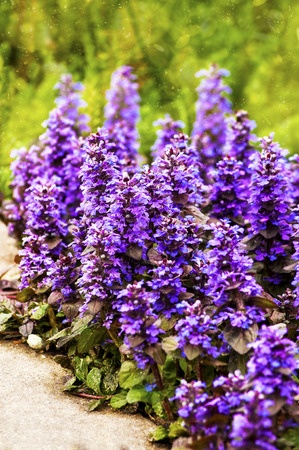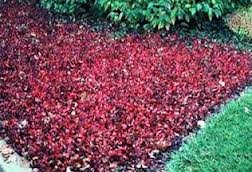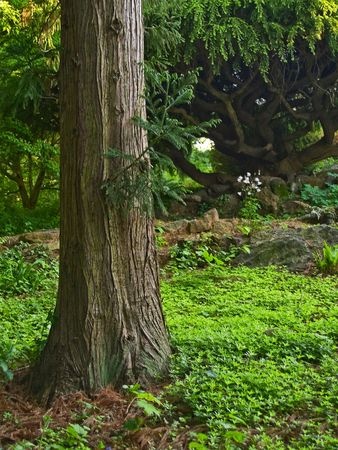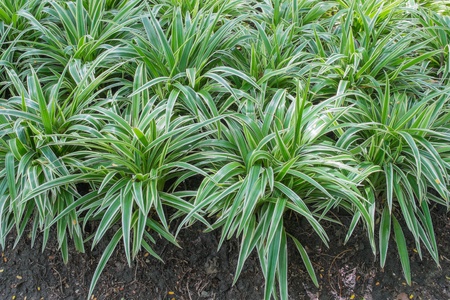Best Inexpensive Ground Cover – The Landscape Makeover
Ground Covers are increasing in popularity among residential property owners, and with good reason. The best inexpensive ground cover ideas can literally transform an area from a dry, boring, tired look with patchy grass and bare spots into a beautiful, creative, lush space that you will be proud to show off to your friends will admire for years.
Definition
A ground cover is technically defined as a low growing or trailing plant which covers the ground in areas where grass is hard to grow, such as heavily shaded spots or slopes. They are used in a myriad of ways to turn ugly, poorly kept looks into showy, attractive features of common landscapes. One of the main attractions to ground covers is the ability to convert a negative section of your natural landscape into a plus – and to do it relatively cheaply.
Ground covers are another form of plant having the same characteristics of shrubs. In fact, low growing shrubs can be grown small enough and close enough together to be used as ground covers. They can be evergreen or deciduous, grassy or leafy, flowering or non-flowering. The bottom line is that the options are vast when it comes to ground covers.
What are the benefits?
- You can plant ground cover in shaded areas where regular turf grass cannot grow
One of the most annoying things for a homeowner is the dry bare spot in the middle of the yard or off to the side where grass is either very difficult or impossible to grow due to heavy shade. All turf grass needs sunlight to grow, four hours a day at a minimum. If that isn’t possible, then a ground cover is a great alternative. There are many types that grow well in total to partial shade.
- Ground covers generally require less water than regular turf grass
They still need water, especially when getting established. But as a general rule they can get by with less water than a typical lawn of grass.
- They can be placed in small areas
There are many spots where the space is just too small or narrow to try to plant and maintain grass. The area between stones in a walkway is a good example. This is a perfect spot to put in a low ground cover. Choose a variety that only gets a few inches high and the ground cover will grow and look natural between the stones.
- They can be grown on slopes
Once you have established a ground cover planting on a sloped area you won’t have to mow or trim except every season or two to keep the growth in check. Contrast this with having to mow the grass on the slope as often as you mow your regular lawn. You can plant grass on a slope, but a ground cover is just as attractive and beneficial, and requires less maintenance.
- They contrast with other beds
The different look between low ground covers, turf covered areas, and medium to tall plant beds is aesthetically pleasing and if well planned, can be dynamic in appearance.
- Ground covers can be propagated so beds can be planted more efficiently
You can spread coverage of ground covers by propagating what you already have established. By doing this you can save money in your landscape, you will be able to accomplish what you want without having to buy as many plants. Propagating starts with a simple cutting of the established plant. You want to find an established plant and look for a young, small stem in which the root has begun to anchor into the soil. You can dig the young root out fairly easily. Dig out the complete root, leaving a small soil ball attached to the root. Now remove the small section from the main plant, and transplant it in the new area. Water it and keep it watered until it begins to establish its own growth. The growth should come fairly quickly but you will need to show some patience.
Using Ground Covers in your landscape
Ground covers are planted with the intention of having them spread along the surface fairly quickly. Depending on how many plants you put in the ground, and how close together you space them, your bare spot may be covered quickly. If time is not a major factor for you to completely cover your bare spot, you can save some money by buying fewer plants and putting them further apart. Even doing this will add to the appeal of your yard, because you will have attractive plants down and growing instead of ugly bare soil, even if the cover isn’t completely there.

If your ground cover does spread quickly it may try to invade another bed, or your grass. If this happens keep the ground cover contained by pruning it back.
You can replace poor performing grasses that are in areas where grass does not grow well with different types of grasses that don’t need much moisture and grow in tough spots. This reduces the need to water as well as creating a new look for your landscape.
Ground covers come in many varieties. Some grow low to the surface while others get up to a couple of feet high. Your situation will go a long way toward determining your selection of what ground cover to plant. Some people have smaller children or pets and need a cover that will stand up to the wear and tear that comes from that foot traffic. Other people need something that is more drought tolerant. Some need to plant in full sun, others in complete shade, and of course all the situations in between.
Planting Groundcovers
When planting your ground cover you may have several small plants, or not as many medium size plants. Either way, you want to prepare the area you are going to use before you put the first plant in the ground. Kill off any existing vegetation. If you can do this manually with a rake or hoe, that is preferable, but if not then use a herbicide to do this, or follow one of the popular organic methods.
Once all the grass and vegetation is eliminated, your next step is to prepare your soil for the planting. Cultivate the area and add in about 3-5 inches of organic matter. To keep the ground cover plantings from intermingling with other beds you will need to establish a border. This can range from very inexpensive, such as a plastic edging that you anchor by hammering stakes into the ground, to something as elaborate as a stone border.
Planting ground cover under trees can be tricky as you do not want to disturb the tree roots, or if you do, as little as possible. You can spread topsoil over the area, but only about a 4-6 inch layer. If you use more than that you may choke the roots off.
When you decide what you want to plant, do a bit of research. Find out how large your plants will ultimately get, how much ground they will cover when they have spread out to their mature size. From this you can determine how close you will need to space the plants. Do not try to estimate in your head unless it is a very small area you are dealing with. Spend a little time and draw yourself a scale diagram of the area, with the correct dimensions. When you know how far apart to space the plants you will then know how many you need.
It is a mistake to plant too close together. It may fill in bare spots faster, but it will result in the plants crowding each other. Water your ground cover plants a few minutes a day at first. They need it until they get established.
What should I choose?
There are so many different possibilities with ground covers that there is no way to list them all in this article. Even some of the examples I am going to suggest have many different varieties. It is definitely worth your time to define your needs prior to deciding, and then choose plants that fit in that criteria, as far as sun vs shade, hardiness zone, dry or moist conditions, as well as what generally appeals to you. Here are a few of the very best inexpensive ground covers that will add color, contrast, and value to any landscape:
- Ajuga
The Carpet Bugle variety gets about 6 inches high and is grown primarily in shade. Evergreen, it is hardy for zones 3-9. It flowers in May, putting out tiny purplish blooms. Plant them 8-12 inches apart, and mow them when the flowers fade away.

- Sedum
Sedum varieties number in the hundreds, and they are one of the most versatile and easy plants to grow. Varieties primarily range from 3-6 inches tall. They do well in full sun to partial shade, are drought tolerant, and are often used as a border for a walkway, or as colorful additions to a rock garden. Evergreen, they are hardy for zones 4-9. Some varieties can be grown in zone 3.
- Purple Wintercreeper Euonymus

This plant grows to 10 inches high. Primarily a full sun plant, its foliage is green throughout the summer and turns an impressive rich maroon color in the winter. It is hardy for zones 4-9. As a creeper it is a plant that can be used to cover a large area.
- Asian Jasmine
This plant does well in hot sunny locations. It is inexpensive and durable. It grows 6 inches high and spreads its area so a small planting can cover a good bit of ground. It is only hardy up to zone 7, however, so it will not do well in northern climates during the winter.
This is one of the best ground covers to use in shady areas. It will get 8 inches tall and plants will grow to mature size so it is important to space them properly when you plant. It is hardy from zones 6-11.
- Liriope
This is a taller grass like ground cover that gets up to 15 inches tall and produces lavender like colored flowers in the summer. It does well in shade to partial shade, and is great as a border for walkways. It is hardy from zones 4-10.
- Thyme
This attractive, aromatic herb is also wonderful as a ground cover. It is especially good for planting in between stones in a walkway as it grows low to the ground. It does best in full sun and flowers in summertime. It is hardy from zones 5-9.

With ground covers the choices and combinations available to choose from are almost endless. You really are only limited by your own personal preferences, your budget, and your available space. I highly recommend you look into adding one of these above or another ground cover to your landscape soon.


2 thoughts on “Best Inexpensive Ground Cover – The Landscape Makeover”
I’ve got a few friends with “tricky” yards. I have no doubt they will find this article very useful. I would’ve never thought to use flowers and low lying shrubs to cover patchy unfavorable areas.
Jennifer,
Yes, you have to know about how much sun those particular areas get. If less than 3-4 hours of direct sunlight, there really is no grass that is going to grow in that spot. So you have to get creative if you want to “cover up” those spots. But fortunately, there are a lot of ways you can do this.
Hope your friends find the article useful.
David